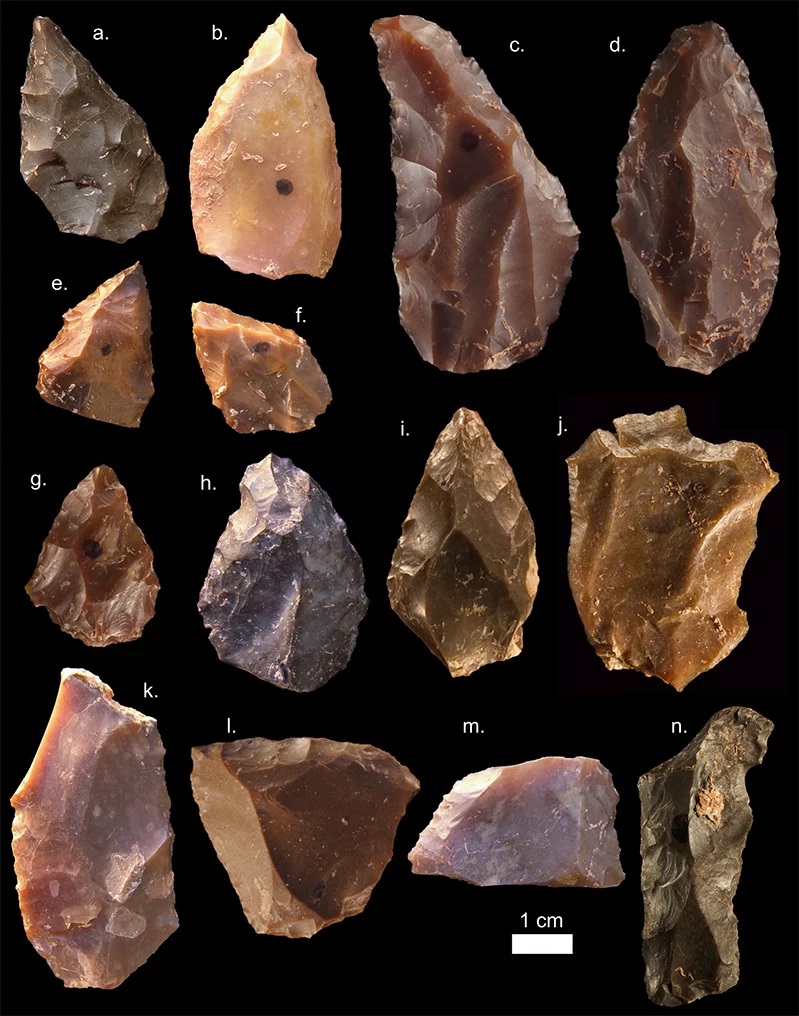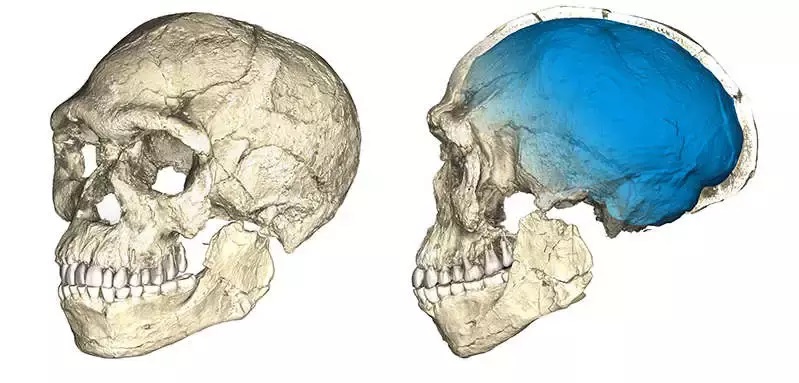You can find all manner of weird and wonderful stuff in caves. From softball-sized spiders to ancient water, and even the remnants of Neanderthal interior design, some of our planet’s greatest treasures have been found in its hidden hollows. It was in a cave in Morocco that archaeologists made a discovery that changed our view of the very origins of our species: the oldest ever human fossils.
The find was made at the Jebel Irhoud site in western Morocco, approximately 50 kilometers (30 miles) southeast of the port city of Safi. It’s a site that’s been known to archaeologists since the 1960s, yielding a rich offering of ancient stone tools, bones, and other artifacts.
An excavation project that began in 2004 eventually led to the discovery of 16 new Homo sapiens fossils, including teeth, skulls, and long bones from at least five individuals. Buried within the same deposits were animal bones, mostly from gazelle, and tools dating back to the Middle Stone Age.
Rarely for a site of this age on the African continent, evidence of heating on many of the flint artifacts uncovered near the human fossils meant the scientists were able to use a sophisticated technique called thermoluminescence dating, allowing them to establish a clear chronology for the finds, as well as taking a fresh look at some fossils from early digs at the site.

A selection of the Middle Stone Age tools found at Jebel Irhoud. J and K show evidence of the Levallois stone-working technique.
What they discovered pretty much changed the game when it comes to the study of human evolution.
“This is much older than anything else in Africa that we could relate to our species,” team lead Professor Jean-Jacques Hublin, of the Max Planck Institute for Evolutionary Anthropology, told IFLScience when the findings were published in 2017. “In light of this new date – at 300,000 years old – it convinced us that this material that we present is the very root of our species. The oldest Homo sapiens ever found in Africa.”
In the first of two papers on the monumental discovery, Hublin and colleagues described how the morphology of the fossilized bones aligned with that of modern humans. In this composite reconstruction of the skull of one of these ancient individuals, it’s clear to see that they would have had a distinctly human face shape, although the braincase, shown in blue, is more reflective of earlier hominins.

They may well have looked like us, but the brains of the earliest Homo sapiens would have been a little different from our own.
This suggests that brain evolution continued within the Homo sapiens lineage, with a series of genetic leaps eventually allowing our forebears to develop brain functions and structures that are different from those of our extinct cousins.
The second paper detailed the dating of the fossils, explaining how the findings corroborated those from an earlier dig in Florisbad, South Africa. A skull fragment dating back 260,000 years had been interpreted as belonging to an early Homo sapiens individual, and it matched the features of the new Moroccan finds.
Combining these results with other fossil evidence from Ethiopia, the scientists concluded that there was reason to suspect the evolutionary history of our species might encompass the entirety of the continent of Africa. As Hublin told IFLScience, “If there is a Garden of Eden, it is Africa.”
For many, though, this was a shift in mindset. “North Africa has long been neglected in the debates surrounding the origin of our species. The spectacular discoveries from Jebel Irhoud demonstrate the tight connections of the Maghreb with the rest of the African continent at the time of Homo sapiens‘ emergence”, said team member Dr Abdelouahed Ben-Ncer in a statement at the time.
The find represented a shake-up in the field of palaeoanthropology, with Hublin even being honored by King Mohammed VI of Morocco for his research. Since then, even more has been learned about how modern humans came to be, and the potential overlap between early Homo sapiens and some of our extinct ancestors, including Neanderthals, Denisovans, and the enigmatic Homo naledi.
We’re still making new discoveries every day about the evolution of our species. Whether it’s using modern computational genomics, or good old-fashioned rooting around in caves, questions about how we got here – and just what happened along the way – will always ignite the spark of curiosity.
Source Link: How The Oldest Ever Human Bones Were Found Buried In A Moroccan Cave